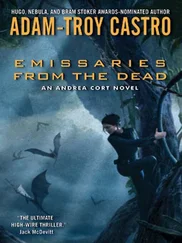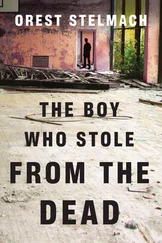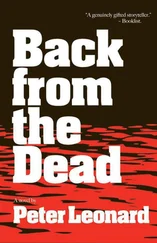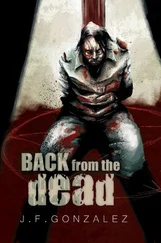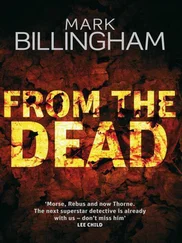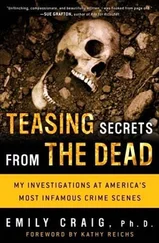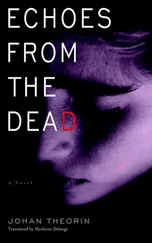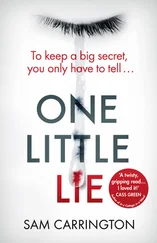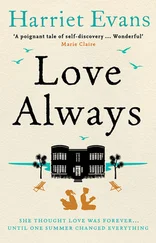If the body part in question held teeth, the dental identification specialists hurried over to take a quick look and make some notes. These amazing experts could tease secrets from even the smallest piece of dental enamel or burned tooth root-indeed, more than half of the victims at Waco were identified through dental comparisons. The trick here, as with the fingerprints, was finding a matching record. Luckily, many (though not all) of the adults at Waco had dental records on file, so after this quick initial survey, the dentists could start right in searching their files for a possible match. They'd get more time to examine the teeth after the autopsy.
Meanwhile, every moment that the conference room wasn't being used for briefings, investigators were constantly on the phone there, beseeching family members, dentists, and doctors around the world to send any and all records to Fort Worth. The fingerprint experts were going through a similar process-taking what prints they could find and then searching madly for a match. True, lots of the hands had been pretty badly burned, leaving very little skin from which to lift a print. But those FBI experts could sometimes work magic, managing somehow to pull prints from even the most charred fragments of tissue.
Of course, the most heroic print-lifting might produce disappointing results since, TV drama to the contrary, most people's prints aren't on file. There is a central computerized database that compares fingerprints and spits out IDs at the push of a button, but you soon find out that it doesn't cover most of the prints you're looking for-it only includes people with criminal records, and most mass-fatality victims don't have those.
Again, the protocol differs depending on the type of mass fatality. In a plane wreck, with a list of known victims, you can ask employers if they have their staff's prints on file. Or if you know that Jane Doe was on the plane, you can ask her husband to let you lift matching prints from her bathroom mirror or her can of hairspray. But at Waco, we had neither a reliable list of names nor very many printable hands. That put more pressure on the rest of us to try to take up the slack.
Investigators had responded by turning one end of the conference room into a command center dedicated to gathering information on the men, women, and children who had died. Men and women were constantly talking on the phone, ripping paper from the fax, making multiple copies of documents, and scrutinizing computer screens in a frantic effort to keep up with all the information that was pouring in. Little by little they filled out vital information on the growing list of names: age, race, sex, height, weight, eye color, hair color and length. If they could, the staff added other identifying details: prior injuries, surgeries, scars, tattoos. Authorities were holding in reserve the most tedious and time-consuming ID method of them all: the then relatively new science of mitochondrial DNA analysis. In the end, DNA told the story for many of our victims, but in the interests of speed and efficiency, we had to start with the more traditional methods, especially since DNA testing was then a complicated process that involved a number of steps taking anywhere from two weeks to more than a year.
Back in the morgue, the bags kept coming and coming, a seemingly endless procession of human debris. We anthropologists were in constant demand to help with victim identification. If a body had been reduced to a charred torso, we tried to determine the victim's age, race, and sex by examining the bones. This could at least narrow down the possible list of matching names. By now investigators suspected that there had been fifty-five adults, five teenagers, and twenty-three children in the compound when it burned. By further dividing the list of victims into male/female and White/Black/Asian, we made it easier to match charred remains to the names on our list.
The children were the hardest to deal with-both scientifically and emotionally. Max and his team had found many of the children wrapped in blankets, unscathed by the fire. Apparently the Davidian adults had put the young ones in the “bunker” area of the compound. Then the walls collapsed, burying the children under several feet of ordnance, burned structural debris, and other bodies. By the time investigators dug down under the rubble, the children's bodies had already begun to decay. At least they had been spared the worst ravages of the fire.
In order to locate the babies' tiny bones and teeth for analysis, we often had to search by touch. Each little corpse had been reduced to a rotting mass of flesh that revealed no secrets to even the most trained eye. The only way to learn anything was to feel around inside the mutilated body. You could usually find the skull bones pretty easily-they were relatively large, flat, and grouped together, even if they no longer held their characteristic globe shape. But in order to find the tiny pieces of still-growing bones and teeth, we had to start near the victim's head, manually compressing the cold, greasy, decomposed tissues until we felt the tiny, hard treasures we were seeking. Babies' backbones are still developing, with each vertebra composed of three irregularly shaped pieces resembling a set of toy jacks. When we examined shafts of the newborns' forearm bones, we found they were only slightly bigger than wooden matchsticks, while the bones of their fingers and toes were about the size of a grain of cooked rice. It may sound gruesome in description, but you'd be surprised how fast you get used to focusing on the physical details of the body, blocking out the reality of the little human who once inhabited it.
When we'd finally recovered what bones we could, we put the tiny pieces on top of a fine-mesh screen and rinsed them with hot soapy water. Then we had to try to identify the child, first trying to estimate the age and then perhaps the sex. The first time I worked on a child, the body still contained some identifiable soft tissue, so I was able to determine by looking at the genitals that I was working on a little girl. Later I'd get children who had been reduced to piles of burned bones-no soft tissue, nothing to tell me the sex. On an adult, that wouldn't matter: I can usually tell the sex of an adult arm or leg bone by measuring its size at the joint or by finding sex-marked features in a pelvis or in some morphologic feature such as muscle insertions-the places where muscles fit into the bone, which are generally more prominent in men. With young children, it's harder, since boys' and girls' bones pretty much resemble each other until puberty.
When I later worked on mass fatalities, I often used clothing to help determine gender, but I couldn't do that here. We had already been told that in the Davidians' communal compound, items of clothing were shared by all the children and essentially “unisex,” with pretty much everyone wearing the same kinds of shorts and T-shirts. So now, since I was working on an unburned child, I turned to hair color and length to help with the ID. I cut off a lock of hair, washed it, and set it aside to dry. Later, I'd note its characteristics in that victim's permanent record, where hopefully it would narrow down the list of possible matches.
My job would have been far easier if this child had come to me with teeth still inside her mouth. As in most cases, though, the teeth had fallen out as the little body decomposed, and I had to feel around for them inside the cold, putrid, oatmeal-like soft tissues that had once surrounded her head and neck and filled her skull. As patiently as I could, I managed to retrieve fourteen teeth. I laid the teeth on top of a fine-mesh screen and rinsed them off with a stream of warm water from the sink before reinserting them into their sockets. I continued to pinch bones out of the goo, swishing them gently in a pan of warm soapy water and laying them out in anatomical order on a clean white sheet: first the skull fragments, then the neck bones, collarbones, shoulder blades, ribs, and so on toward the toes, until the little skeleton was complete.
Читать дальше

